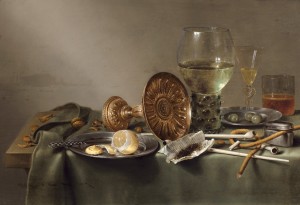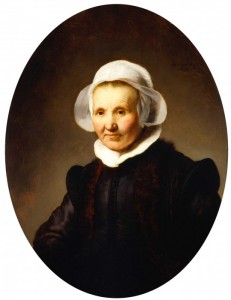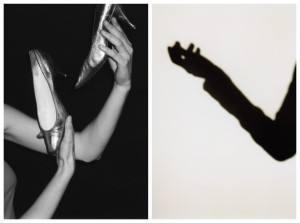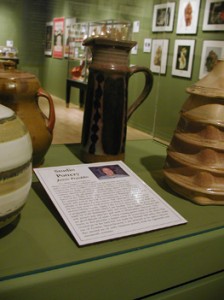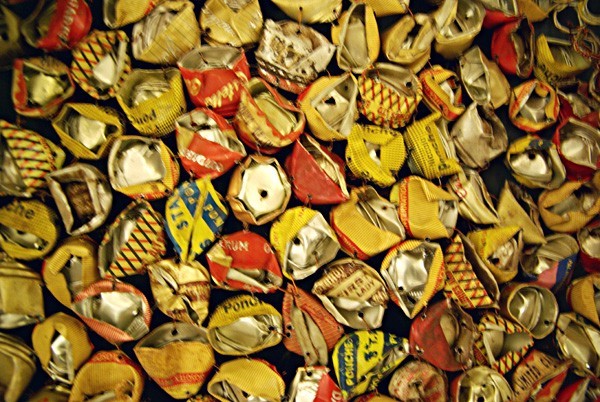Coming Attractions at Museums: March 2011
Highlights this month in museums around New England include an exhibition of poetic and playful furniture, photographs and videos that radically rethink how a museum should treat art objects, and a show featuring an African artist who specializes in large, shimmering sculptures composed of recycled liquor bottle tops.
By Peter Walsh.
The van Otterloo Collection, Marianne Mueller at Peabody Essex Museum
Anyone starting a collection of Dutch and Flemish Masters in the late 20th century would have needed a lot money, connections, good advice, and nerves of steel. But a collection of Dutch Master paintings? That took a ton of hubris as well.
Trawled over for several centuries by museum curators; English aristocrats with country houses to fill; continental royalty; social-climbing, American robber barons, Japanese billionaires; and every art dealer and auction house looking for a quick profit, this particular sea is all but fished out.
That Rose-Marie and Eijk van Otterloo, born in Belgium and the Netherlands, respectively, and transplanted to New England, not only managed to brave inflated auction prices, potentially dubious provenances, heavy restorations, and waters famously infested with clever forgeries and wishful attributions but also held on to both their art and their sanity through it all, is perhaps accomplishment enough for one collecting career.
But “Golden: Dutch and Flemish Masterworks from the Rose-Marie and Eijk van Otterloo Collection,” which had its American debut at the Peabody Essex Museum (PSM) in Salem late last month, aims to show that the result is actually worth seeing.
Starting with antique carriages for their New England farm back in the ‘80s, the Otterloos moved on to sporting prints. They bought their first Dutch painting about 20 years ago. Then they were, as collectors say, hooked.
Funded with profits from Eijk’s investment firm, they had one-time Museum of Fine Arts paintings curator Peter Sutton and a former director of the Rijksmuseum for advice. The rest was up to the intrepid couple.
The Otterloo collection, seen publicly in Salem for the first time as a whole, contains decorative arts as well as about 70 paintings. It features a number of the first and second string names—Hals, Ruisdael, Dou, Steen, Cuyp, and others who specialized in still-life, hunting paintings, landscape, or genre scenes for the booming art market of the 17th-century, low countries. The collection’s pride and joy is a Rembrandt portrait—a lovely though (for Rembrandt, at least) fairly bread-and-butter early work, whose purchase was allegedly financed by the sale of more than a dozen lesser paintings.
How does this Johnny-come-lately collection measure up to the great ones of the past? Judge for yourself, through June 19.
At the other end of March, Swiss artist Marianne Mueller completely rearranges the Peabody Essex in a monumental reinstallation opening on the 24th.
“Any House is a Home” will combine Mueller’s own photographs and videos with some 291 objects from the museum’s own fantastically varied collections, including items from its “lesser-seen corners,” of which the museum has quite a few. It all will be centered on a huge, two-story structure covered in photographs from the museum’s historical collections.
“I want to show everything with the same measure of distance and closeness, whether it is a human being or an object, skin or glass.” Mueller says. “Every image should have the same intensity. Thus my archive becomes a democracy of images, closer to the dynamics of poetry than the strictures of the novel.”
The idea that how art works are displayed makes a difference to how they are seen has been around for a long time, mostly among museum curators and insiders. As an artist, though, Mueller has been given considerably more scope than usual. Her radical rethinking of how a museum should treat art objects continues through the last day of 2011.
Jon Brooks at the Currier Museum of Art
Starting with the elegant Portsmouth School on the coast and the maverick craftsmanship of the Dunlop Family of Goffstown and points west, New Hampshire has, since colonial days, been home to distinctive furniture makers who were never slaves to convention. Manchester native Jon Brooks, a sculptor and a leading member of the “studio” furniture movement for more than 40 years, carries on that Granite State tradition into the 21st century. His award-winning work has been exhibited widely in the United States and Europe.
“Jon Brooks: A Collaboration with Nature,” which opens at Manchester’s Currier Museum of Art on March 19, features Brooks’s famously poetic and playful furniture, often inspired by the contorted, natural wood he finds near his home. Even more than his New Hampshire predecessors, Brooks is his own man, obliterating the distinction between function and creative expression. On view through June 12.
“Bennington Collects” at the Bennington Museum
Rural Bennington County, VT, is a distinctive, if unlikely, center of American culture, sometime home to a celebrated series of potteries, Abraham Lincoln’s only surviving son, a famous Revolutionary Battle and its distinctive monument, several important modern dancers, including Martha Graham, a famous female photographer, an assortment of significant writers and poets, and the Bennington Museum, with its unique collections of Vermont and American folk-arts.
“Bennington Collects IV: The Curated Edition” at the Museum March 12 to May 30, aims to show that the region’s special cultural heritage lives on by featuring objects collected by residents of the county and nearby towns. Organizer Jamie Franklin, the museum’s curator of collections, allows the collectors a rare voice of their own, featuring their collecting biographies, thoughts, and philosophies of collecting.
College Museum Roundup
New England is blessed with an extraordinary wealth of art museums on the campuses of the region’s schools, colleges, and universities. These intellectually blessed institutions frequently add supplemental professorial brainpower to their curators, exhibitions, and collections. Art-for-art’s sake purists sometimes deplore the heavy intellectualization that can result. But others enjoy the context, perspective, and, above all, the stories the professors can tell about objects with a history.
A case in point is “Labeltalk 2011: Art of the Ancient World” at the Williams College Museum of Art March 12 through July 31, 2011. The show features seven of its own art works from the ancient worlds of Europe, Asia, and the Americas, with responses from professors across many disciplines.
The exhibition is part of an on-going series of shows that involved 19 professors representing 17 different departments at Williams, including American studies, anthropology, art, biology, classics, comparative literature, computer science, dance, English, history, mathematics, music, philosophy, political science, psychology, religion, and theatre.
On March 30, Wellesley College’s Davis Museum and Cultural Center opens the American premier of African artist El Anatsui. Born in Ghana and now resident in Nigeria, El Anatsui is best known for large, shimmering sculptures composed of recycled liquor bottle tops. A major retrospective covering the artist’s entire cateer, “El Anatsui: When I Last Wrote to You about Africa,” will fill two entire floors of the Davis through June 26.
.

